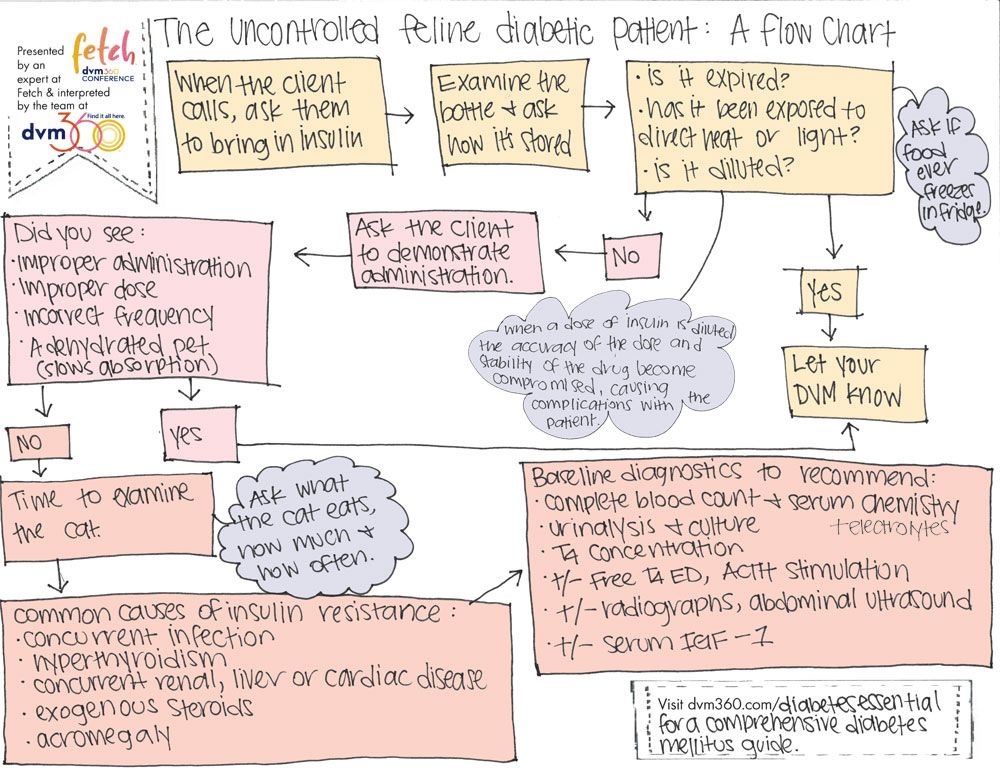The unstable feline diabetic patient, a Fetch dvm360 conference flow chart
A breakdown of next steps to take when clients call concerned about their cat.
How does a feline diabetic patient go from simple to complicated? It takes detective work, says Fetch dvm360 conference speaker Paula Plummer, LVT, VTS (ECC, SAIM). Taking a good history is an important part of this detective work, especially when it comes to the insulin that the patient receives and how the client administers it.
Check out the flowchart below for steps to get started with this history.

Things you should ask during your history:
> How was the insulin stored?
> Is it expired?
> Has it been exposed to direct heat or light? Also ask clients if food ever freezes in their refrigerator.
> Has it been diluted? (Insulin should not be diluted. Once this has been done, the accuracy of the dose and stability of the drug become compromised, causing complications with the patient. Sometimes pet owners will have a pharmacist dilute it anyway because it is easier to give a larger diluted dose rather than a tiny undiluted dose.)
Did the client answer yes to any of the above? Let your DVM know.
If the client answered no, ask the client to demonstrate how they administer the pet's insulin.
Did you see:
> Improper administration or dose?
> Incorrect frequency?
> A pet that's dehydrated? (Dehydration slows absorption.)
If you see any of these problems, let your DVM know.
If you didn't, it's time for the doctor to examine the patient.